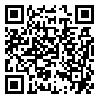Volume 5, Issue 12 (2017)
CFL 2017, 5(12): 85-110 |
Back to browse issues page
Discourse analysis of semiotic functions of lie in folk tales: Slippery in iconic system of language
Abstract: (9032 Views)
To explain how lie is made from the perspective of semiotics, we first need to define icon and its function in the domain of discourse. In this regard, we show that although icon means the maximum amount of similarity between a thing and its representation, there is always the possibility of creating distance between the two that can vary from zero to infinity. This distance makes something as lying in language. According to this, icon can fluctuate from hypoicon to hypericon. Based on these explanations, we figure out that lying is a sign that loses its conformity with the object which is supposed to be represented. The article examines the causes of less or total disagreement of this icon in folk tales according to semiotic process. The main purpose of this article based on semiotic approach and iconic sign process, is to discover the causes of lacking conformity with the reality as well as the fluctuations of this icon. The main hypothesis of this theory is that the involvement and intervention of sense- perceptional and emotional processes as active factors in human behavior could change our understanding and point of view. For this reason, they prevent icon from a stable conformity with the object in time and place. As a result of this process, the discourse of lie is created.
Keywords: Lie, Icon, Hypo icon, Hyper icon, Symbol
Received: 2016/01/11 | Accepted: 2017/03/1 | Published: 2017/03/21
| Rights and permissions | |
 |
This work is licensed under a Creative Commons Attribution-NonCommercial 4.0 International License. |


